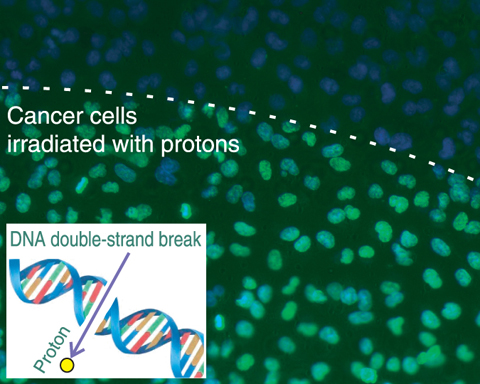
This Picture(152KB)
Fig.11-3 Newly-developed laser-driven proton irradiation system for radiobiological studies

Fig.11-4 Result of laser-accelerated proton irradiation of in-vitro human lung cancer cells
During these past several decades, high-frequency ion accelerators have been used for ion-beam cancer therapy. Recently, high-intensity lasers have been suggested as a potential cost-saving alternative to conventional ion accelerators for this radiotherapy. A unique feature of laser acceleration is the extremely high peak current given to a single proton bunch for a short duration. However, technical problems have prevented production of such high-current, short-duration laser-driven ion beams suited for investigating biological effects.
We have developed a laser-driven ion irradiation apparatus for biological studies that causes the desired fundamental interactions between laser-accelerated protons and human cancer cells in a vacuum (Fig.11-3). This apparatus delivers ~2.5×104 laser-driven protons onto a 1mm2 cultured (in-vitro) cell layer within a time interval of only 15ns. We estimated the proton flux to be ~103mm-2 ns-1. The peak current was seven times that in ion beam therapy by conventional accelerators. The DNA double-strand breaks of in-vitro human lung cancer cells (A549) are shown in Fig.11-4. These results indicate that laser-driven protons are applicable to ion-beam cancer therapy. This laser-driven table-top ion-irradiation apparatus will open a new field of radiobiological science, and many applications should be forthcoming.
This work was supported with Special Coordination Funds for Promoting Science (SCF) managed by the Ministry of Education, Culture, Sports, Science and Technology of Japan (MEXT).
<Previous: 11 Photo-Medical Research Cooperation | Next: 11-2 >